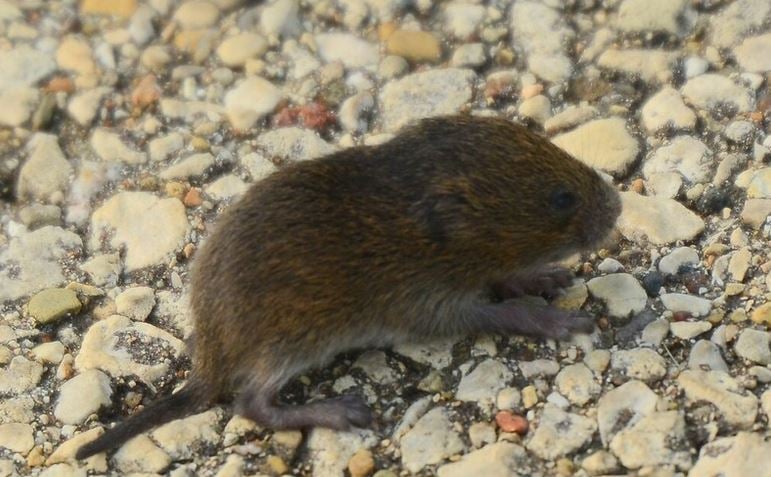Managing Vole Damage: Effective Control Techniques
Managing Vole Damage: Effective Control Techniques
Blog Article
Understanding Vole Bug Control: In-depth Insights on Infestation Avoidance and Therapy Approaches
By identifying the subtle indications of vole infestation early on, we can take positive measures to avoid extensive damage. In this conversation, we will certainly check out the subtleties of vole actions, dive right into the identification of infestation indicators, and discover the most reliable avoidance and treatment methods.
Comprehending Vole Behavior
Examining the foraging patterns of voles uses useful insights into their behavior and environment preferences. Voles, small rats resembling computer mice, are herbivores understood for their underground tunneling tasks. By observing their foraging habits, scientists can obtain a better understanding of where voles like to establish their habitats and the extent of their environmental impact. Voles are prolific dog breeders, with a solitary female efficient in producing numerous clutters in a year, making it critical to comprehend their behavior for reliable insect control strategies.
Research study indicates that voles display careful feeding behaviors, favoring origins, roots, and seeds. This dietary preference influences their foraging patterns, leading them to areas rich in vegetation and ground cover. Additionally, voles are understood to produce sophisticated passage systems for foraging and nesting functions, suggesting a high degree of adaptability to their environments.
Recognizing vole behavior is vital for carrying out targeted pest control measures that disrupt their environment preferences and foraging activities (vole yard damage). By examining their actions, specialists can establish a lot more efficient avoidance and treatment strategies to take care of vole problems

Identifying Signs of Vole Infestation
Vole problems can be identified by acknowledging particular indicators of their existence in a location. Among the most usual indications of a vole problem is the existence of surface paths. Voles create networks of slim paths on the ground that are normally around two inches vast. These paths are commonly found in grassy locations or under compost or ground cover where voles can relocate freely and search for food.
Another essential indication of vole problem is the existence of small burrow openings in the ground. Voles dig shallow burrow systems with multiple entries and exits. These burrows function as sanctuary and nesting sites for the voles. Additionally, voles are understood to leave behind eaten plant stems, roots, and bulbs near their burrow openings, indicating their feeding activity in the area.
Discovering these droppings along runways or near burrow openings can validate a vole invasion. By being vigilant for these signs, property proprietors can promptly address vole infestations and prevent further damage.
Implementing Proactive Avoidance Procedures

Moreover, employing all-natural vole deterrents like castor oil-based repellents or predator pee can serve as reliable preventive procedures. It More hints is also suggested to consistently check outdoor areas for any indicators of vole activity, such as paths or burrow openings, to resolve potential problems promptly. vole yard damage. By adopting these positive avoidance techniques, building owners can dramatically lower the likelihood of vole damages and preserve the health and aesthetics of their landscapes
Efficient Therapy Approaches
Incorporating targeted trapping techniques and using approved rodenticides are essential components of efficient treatment methods for taking care of vole problems. Capturing can be an efficient way to reduce vole populations, especially when placed tactically in their active runways. Snap traps and live traps can both work, with the latter enabling the capture and relocation of voles. When using rodenticides, it is crucial to follow security guidelines to stop damage to non-target animals and animals. Place rodenticides in secure bait terminals to lessen dangers to unexpected targets. Furthermore, habitat adjustment, such as decreasing ground cover and eliminating resources of food, can aid hinder voles from infesting a location. Regular monitoring and upkeep are likewise essential aspects of effective therapy methods to guarantee that vole populaces are kept under control. By combining trapping, rodenticides, habitat alteration, and regular monitoring, efficient vole bug control can be attained.
Monitoring and Upkeep Tips
Routine surveillance permits for the very early detection of vole task, making it possible for punctual treatment prior to problems get worse. To effectively monitor vole populaces, purposefully positioned catches can be used in vole runways or near burrow entryways.
Additionally, maintaining a tidy and well-kept landscape is crucial in vole avoidance. Clearing up away particles, such as stacks of wood or thick vegetation, imp source gets rid of potential vole environments. Routinely cutting and trimming yards greenery aids reduce vole hiding places and decreases their accessibility to food sources.
Furthermore, ongoing upkeep of physical barriers, such as fencings or cable mesh, is important to avoid vole intrusion. Inspecting and fixing any problems to these structures ensures that vole control continues to be effective in safeguarding homes from infestations. By integrating these monitoring and maintenance techniques into a thorough vole insect control strategy, individuals can properly manage vole populaces and protect their residential properties from damage.
Final Thought
To conclude, understanding vole bug control calls for a solid understanding of vole habits, the capacity to identify indications of problem, executing positive avoidance steps, efficient therapy methods, and regular monitoring and maintenance. By taking a thorough approach to vole control, people can properly manage and avoid invasions, eventually shielding their building and surrounding atmosphere from damage caused by these little rats.
In this conversation, we will certainly discover the nuances of vole behavior, dig right into the recognition of problem signs, and reveal the most efficient prevention and treatment methods.Integrating targeted trapping methods and utilizing approved rodenticides are vital elements of reliable therapy approaches for taking care of vole problems. To properly monitor vole populaces, purposefully put catches can be used in vole runways or near burrow entrances. Examining and fixing any type of damages to these structures ensures that vole control continues to be reliable in securing properties from problems. By including these tracking and maintenance techniques into an extensive vole bug control plan, people can successfully handle vole More Info populaces and secure their homes from damage.
Report this page